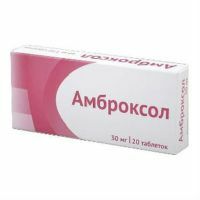
Ambroxol is a remedy for the treatment of respiratory diseases, it is especially effective when coughing with hard-to-recover sputum. The drug is available in various forms( syrup, tablets, solution for injection, inhalation, etc.), which can be used in both adults and young children.
- Structure and mechanism of action
- release form and dosage
- Indications
- Instructions for use
- Tablets
- tablets( effervescent)
- Pastilles lozenge
- Capsules
- Syrup
- solution for inhalation
- solution for injection and intravenous
- droplets
- Contraindications
- Adverseeffects
- For children
- In pregnancy
- Analogues
- Azmaryl
- Alteika( Mucaltin)
- Ascoril
- Acetal C( ACS, Acetylcysteine)
- Bronchosan
- Bromhexine( Brmgeksin-Akrikhin, Bromhexine MS Bromhexine-Egis, Solvin)
- Cough
- Pakseladin( Tusupreks)
- Pektolvan Ivy( slept Gedeliks, Gerbion Ivy Bronhikum)
- pectoral
- Pertussin
- Tavipek
- Flyuditek( Bronhobos, Libeksin Muko, Fluifort)
Composition and mechanism of action of
The main active substance is ambroxol hydrochloride.
Ambroxol belongs to the group of mucolytic drugs and is used as an expectorant for pathology of the respiratory tract. It stimulates the motor function of the respiratory tract and has a pronounced expectorant and secretolitic effect. Also, the drug reduces the viscosity of phlegm and practically does not cause an increase in its volume, that is, it does not provoke adverse effects that often occur when other expectorants are taken.
An important property of the drug is its ability to block the disintegration of pulmonary surfactant and increase its quantity( thanks to the surfactant uniformity of configuration, surface tension, extensibility and lung volume are maintained).
It is also noted that the drug has an immunomodulatory, anti-edematous and anti-inflammatory effect.
Ambroxol is quickly absorbed in the alimentary tract and begins to act after 30 minutes, the action time is 6-12 hours. The drug is metabolized in the liver and is excreted through the kidneys.
to contents ^Form release and dosage
Ambroxol is available in forms:
- tablets( lozenges) for resorption of 15 milligrams;
- tablets ordinary or effervescent of 30 milligrams for oral administration;
- sustained-release retardation capsules at 75 milligrams;
- injection for 15 milligrams;
- syrup with different dosage and volume;
- drops for ingestion and inhalations at a dosage of 7.5 milligrams per milliliter in various volumes.
Indications
Mucolytic drug is effective in diseases of the respiratory system, conditions that are accompanied by the formation and formation of viscous, poorly separated purulent-mucous or mucous sputum in the lungs and bronchi.
Indications for use Ambroxol:
- pneumonia( pneumonia);
- obstructive bronchitis( in chronic and acute form);
- tracheitis;
- laryngitis;
- constrictive bronchiolitis;
- rhinitis, sinusitis;
- bronchial asthma;
- cystic fibrosis;
- pharyngitis;
- respiratory distress syndrome( shock lung) in adults;
- atelectasis, caused by mucoid blockage of the bronchi, in patients with established tracheostomy tube, and so on;
- respiratory distress syndrome( SDR) in infants and newborns( including those born before the established term) and other pathologies associated with impaired bronchial secretion and which are accompanied by increased formation of viscous mucus.
Instruction for use
It is forbidden to take medication without medical prescription for more than 4-5 days. If necessary, the course of treatment can be extended by an observant specialist.
to table of contents ^Tablets
To be taken orally during meals with a small amount of water.
Adults and adolescents after 12 years in the first 2 days are prescribed 1 tablet( 30 milligrams) three times a day, then 1 tablet twice a day or 0.5 tablets 3 times. Children from 6 to 12 years according to the instructions, it is recommended to take 0.5 tablets 2-3 times a day.
to the table of contents ^Tablets( effervescent)
Is taken orally after a meal. Before taking 1 or 0.5 tablets should be dissolved in 200 milliliters of water.
Adults and adolescents with 12 years of age: in the first 2-3 days appoint 0.5 tablets three times a day or 1 tablet in the morning and 0.5 in the evening;in the following days, 0.5 tablets twice a day. Depending on the patient's condition, to enhance the therapeutic effect in the first 3 days may be prescribed 1 tablet twice a day.
to the table of contents ^Resin lozenges
It is taken after a meal, it is necessary to dissolve until completely dissolved. To achieve greater therapeutic effect, it is recommended to consume a large amount of liquid during the treatment period.
Adults and teenagers from 12 years of age are prescribed 2 lozenges three times a day for the first 2-3 days. The maximum daily dose is 6 lozenges. Then the dose is reduced to 1 lozenges 3 times a day. Children from 6 to 12 years prescribed 1 lozenge 2-3 times a day. The maximum daily dose is 3 lozenges.
to contents ^Capsules
Ambroxol Retard is prescribed for adults and children after 12 years - 30 milligrams 2-3 times a day. Children under 12 years of age are advised to use other forms of medication, such as syrup.
to contents ^Syrup
This form of release is mainly used to treat children.
Cough syrup is prescribed in the following dosages: up to 2 years - 2.5 milliliters twice a day;from 2 to 5 years - 2.5 milliliters three times a day;from 5 to 12 years - 5 milliliters 2-3 times a day. For children up to one year, the syrup is prescribed only with the permission of the doctor.
In the first 2 days, according to the doctor's recommendations, the dose can be increased.
Syrup is also prescribed to adults and 10 milliliters three times a day.
to contents ^Solution for inhalation
It is used for treatment of adults and adolescents older than 5 years at 15-22.5 mg 1-2 times a day.
Inhalation solution according to the instructions can be used by using any equipment for inhalations( except for steam), the best nebulizer is.
Before the procedure, the preparation should be mixed with 0.9% saline( in the ratio 1: 1).Inhalation should be carried out in a calm breathing mode, so as not to cause coughing. Patients with bronchial asthma before the procedure are recommended to take bronchodilators in order to avoid nonspecific irritation of the respiratory tract and their spasm.
to table of contents ^Solution for injections and droppers
Adults parenterally( intravenously, intramuscularly) appoint 15 milligrams, in severe conditions - 30 milligrams 2-3 times a day.
According to the instruction, the children are given intramuscular injection of 1.2-16 milligrams per kilogram three times a day;intravenously - 1,2-1,6 milligrams per kilogram per day. Children under 2 years of intravenous - 15 milligrams per day, the permissible multiplicity of administration - 2 times a day;from 2 to 5 years intravenously - 22.5 milligrams per day, the frequency of administration - 3 times;from 5 years and older - 30-45 milligrams per day, the frequency of administration 2-3 times a day.
In order to treat respiratory distress syndrome in newborns and premature babies, the drug is administered intramuscularly or intravenously at a dose of 10 milligrams per kilogram per day, the frequency of administration 3-4 times a day. If necessary, the doctor can gradually increase the dose to 30 milligrams per kilogram per day.
Also, the drug is injected drip for 2 hours( 50 milliliters Ambroxol 500 milliliters 0.9% saline or other basic solvent).
to table of contents ^Drops of
Adults and children from the age of 12 in the first days of treatment are assigned to 4 milliliters, then 2 milliliters three times a day or 4 milliliters 2 times a day;children 5-12 years - 2 milliliters 2-3 times a day;2-5 years - 1 milliliter three times a day;up to 2 years - 1 milliliter twice a day.
Contraindications
- Hypersensitivity to ambroxol.
- Dry non-productive cough, which often accompanies the flu and other acute respiratory infections.
- Gastric ulcer and duodenal ulcer( drug adversely affects their course).
- Epileptic syndromes of various origins.
- Intolerance to fructose( for syrup).
Side effects of
Adverse reactions associated with the use of Ambroxol are rare. The drug is non-toxic and well tolerated by patients.
In some cases, you may experience:
- diarrhea, vomiting, nausea, pain in the abdomen;
- allergic reaction( angioedema, hives, skin rashes);
- general weakness;
- headache.
There are also rare cases of serious lesions of the skin - this is Stevens-Johnson's disease and Lyell's disease. Such side effects are due to the severe course of the disease or the individual reaction of the body to the simultaneous use of several medications.
to the table of contents ^For children
Ambroxol is possible in children, but only according to the medical prescription in the appropriate forms and dosages. Typically, this is syrup and inhalation.
to table of contents ^In pregnancy
Any form of ambroxol is contraindicated in the first trimester of pregnancy. In the second and third trimesters, the doctor must evaluate the potential benefits of treatment for a future mother and the possible risk to the child.
In case of need for treatment during breastfeeding, the question of stopping lactation should be solved, since ambroxol penetrates into breast milk.
to contents ^Analogues
For preparations with the same active substance are: Ambrobene, Ambrohexal, Ambrolan, Abrol, Ambrohem, Bronhorus, Lazolvan, Mukolvan, Flavamed, Khaliksol.
Effective and popular analogs to the mechanism of action:
to table of contents ^Azmaril
Form release - syrup;active substances - salbutamol sulfate, bromhexine hydrochloride, menthol and guaifenesin.
Combined drug quickly and effectively reduces the severity of disorders from the respiratory system. It is prescribed for diseases of the respiratory tract, which are accompanied by an unproductive cough, bronchospasm.
Adults and patients with 12 years of age are prescribed - 10 ml( 2 teaspoons 3 times a day, children 6-12 years - 5 ml( 1 teaspoon) 2-3 times a day, 3-6 years - 5 ml2 times per day The duration of therapy is 5-10 days
Side effects: headache, hand tremor, dizziness, vomiting, nausea, dry mouth, tachycardia, arrhythmia, sweating, hypokalemia, bronchoconstriction
Alteika( Mukaltin)
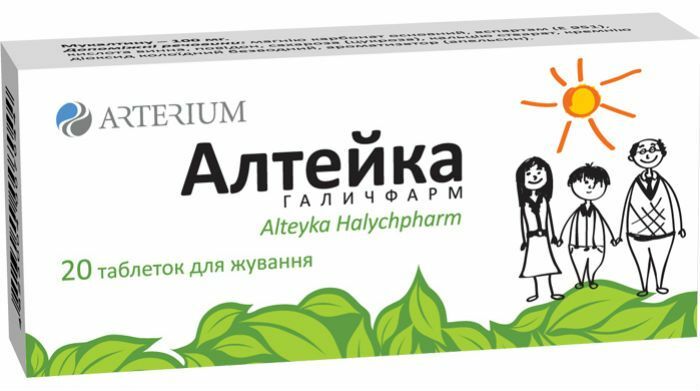
Form release - syrup, chewable tablets;active ingredient is an extract of the althaea root.
Analog Ambroxol in tablets and syrup refers to expectorant preparations of plant origin. Althae improves separation and facilitates the expectoration of phlegm. It is prescribed for inflammatory chronic and acute diseases of the respiratory system( bronchitis, tracheitis, emphysema, pneumonia).
Syrup is indicated taking in before meals. Shake the bottle before use. When applying to children under 6 years old, you must first dilute the syrup with a small amount of liquid.
Adults and adolescents after 14 years of age are prescribed 15 milliliters 4-6 times a day;7-14 years - 10 milliliters 4-5 times a day;2-7 years - 5 milliliters 4 times a day;1-2 years - three times a day;up to 1 year - 2.5 milliliters twice a day.
Althaea in the form of chewing tablets is prescribed for adults and children from the age of 3 in the following dosages: 3-12 years - 1 tablet 2-3 times a day;adults and adolescents with 12 years - 1 tablet 3-4 times a day. The duration of therapy varies from 7 to 14 days.
Side effects: allergic reactions are possible.
Ascoril
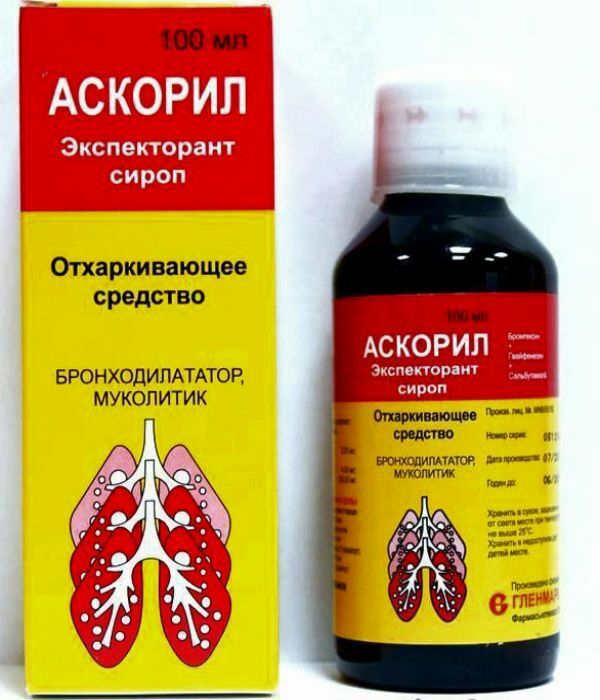
Form release - tablets, syrup;active ingredients - bromhexine hydrochloride, salbutamol, guaifenesin.
The medicine with expectorant, mucolytic and bronchodilator effect is used as a part of complex therapy of chronic and acute bronchopulmonary pathologies with difficultly separated sputum. Like Ambroxol, it is indicated for bronchial asthma, obstructive bronchitis, emphysema, pneumonia, whooping cough, pulmonary tuberculosis and so on. The difference between Ambroxol and Ascoril is that the latter has many side effects and contraindications.
The drug is prescribed to adults and children after 12 years - 1 tablet or 10 milliliters of syrup;children 6-12 years old - 0.5-1 tablet or 5-10 milliliters of syrup;up to 6 years - it is recommended to take Ascoril in the form of a syrup of 5 milliliters. Multiplicity of drug intake - 3 times a day.
Side effects: dizziness, headache, sleep disturbance, increased nervous excitability, tremor, convulsions, vomiting, nausea, diarrhea, exacerbation of stomach and duodenal ulcers, bronchospasm, collapse, heart palpitations, allergic reactions( rashes, urticaria).
Acetal C( ACS, Acetylcysteine)
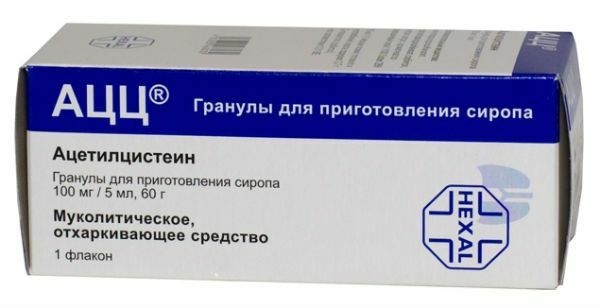
Form release powder for solution preparation;active substance - acetylcysteine.
Mucolytic, bronchosecretory and expectorant drug with moderate anti-inflammatory activity. The drug dilutes sputum, increases its volume, facilitates excretion and promotes easy cough. It is used in the treatment of respiratory diseases and conditions, which are accompanied by the formation of a viscous secretion.
Acetal must be taken after meals. Before taking the contents of one packet, dissolve in 100 milliliters of drinking water. In chronic and acute airway pathologies: adults and adolescents from 14 years of age are prescribed - 200 milligrams three times a day or 600 milligrams 1 time per day;children from 6 to 14 years - 200 milligrams 2 times a day;from 2 to 5 years - 100 milligrams 2-3 times a day;from 10 months to 2 years - 50 milligrams twice a day.
In case of cystic fibrosis: for patients weighing more than 30 kilograms, up to 800 milligrams per day;children from 6 years old - 200 milligrams 3 times a day;2-6 years - 100 milligrams 4 times a day;from 2 weeks to 2 years - 50 milligrams 2 times a day. The course of therapy is 5-7 days, with acute illnesses - several weeks.
Side effects: heartburn, vomiting, nausea, diarrhea, urticaria, heaviness in the stomach.
Bronchosan
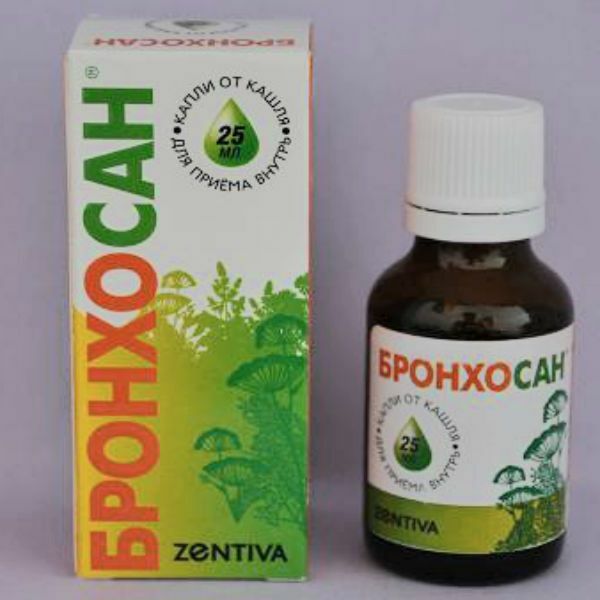
Form release drops;active ingredients - bromhexine hydrochloride, levomenthol, oil of oregano, fennel, anise, peppermint, eucalyptus.
The complex preparation has a secretolitic, expectorant, analgesic and antispasmodic effect. Indications for use are obstructive bronchitis, tracheobronchitis, emphysema, bronchial asthma, cystic fibrosis, pneumoconiosis.
Adults and children after 12 years of age are prescribed 20 drops;from 6 to 12 years - 15 drops;from 3 to 6 years - 10 drops. Multiplicity of admission - 4 times a day. The medicine should be taken before or after eating with water.
Side effects: vomiting, nausea, rarely - exacerbation of stomach and duodenum ulcers.
Bromhexine( Bromhexine-Acryxin, Bromhexine MS, Bromhexine-Aegis, Solvin)
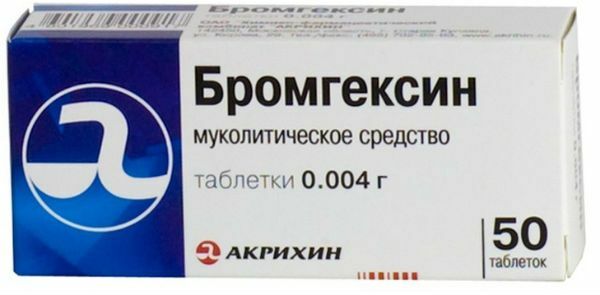
Inlet form - tablets, solution, syrup;active ingredient is bromhexine hydrochloride.
An expectorant and mucolytic drug is prescribed for diseases of the respiratory tract, which are accompanied by hard-to-separate sputum: chronic pneumonia, bronchitis, tracheobronchitis, cystic fibrosis, bronchial asthma.
The medication should be taken by adults and children from 10 years - 8 milligrams 3-4 times a day;from 6 to 10 years - 6-8 milligrams three times a day;from 2 to 6 years - 4 milligrams 3 times a day;up to 2 years - 2 milligrams three times a day. In the form of inhalation, adults - 8 milligrams;children after 10 years - 4 milligrams;6-10 years - 2 milligrams each;up to 6 years - 1 milligram. Inhalation should be carried out twice a day.
Side effects: headache, dyspeptic phenomena, skin rashes, increased sweating, bronchospasm. Contraindications: hypersensitivity. to table of contents ^
Cough medicine
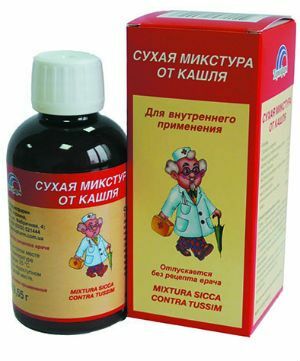
Injection form powder;active substances - sodium benzoate, dry extracts of thermopsis and licorice roots, ammonium chloride and sodium hydrogen carbonate.
It is shown as an expectorant for patients with pathologies of the respiratory tract, accompanied by a cough with viscous sputum( including bronchitis, tracheitis, bronchopneumonia).
1 packet of medicine to dissolve in 15 milliliters of boiled water. Take 3-4 times a day after meals. The course of therapy is 14-21 days.
Side effects: rarely rashes, hives, nausea, vomiting, pain in the abdomen.
Paxeladin( Tusuprex)
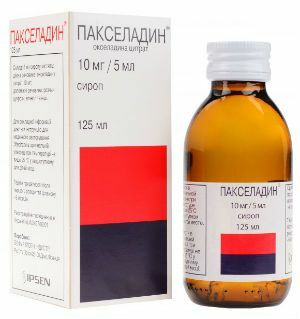
Form release - syrup, capsules;active substance - oxeladine citrate.
Analogue of Ambroxol reduces the severity of cough and normalizes breathing. Assign the drug to patients suffering from an unproductive cough in respiratory diseases( whooping cough, flu, pneumonia, tracheitis).
Capsules should be swallowed whole, washed down with water, regardless of food intake. Adults take 1 capsule every 8-12 hours. It is undesirable to continue treatment more than 3 days.
Syrup is designed to treat children with body weight: 15-20 kilograms - 2.5 milliliters every 4 hours, but not more than 10 milliliters of syrup per day;20-30 kilograms - 5 milliliters every 4 hours, but not more than 15 milliliters per day;30-50 kilograms - 5 milliliters, but not more than 25 milliliters per day.
Side effects: allergic reactions in the form of rashes or redness.
Pectolvan Ivy( Prospan, Gedelix, Herbion Ivy, Bronchicum)
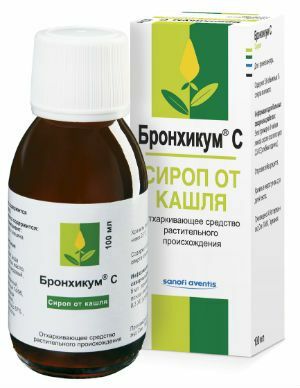
Form release - syrup;active ingredient - dry extract of ivy leaves.
The herbal preparation has mucolytic and moderate spasmolytic effects. Also Pectolvan has antimicrobial and anti-inflammatory effect. Due to the therapeutic effect of the syrup, the viscosity of phlegm gradually decreases and the process of its withdrawal improves.
Adults and children from 10 years are prescribed - 5-7.5 milliliters;6-10 years - 5 milliliters each;1-6 years - 2.5 milliliters. Multiplicity of reception 3 times a day. The duration of therapy depends on the patient's condition and the clinical effect.
Side effects: rarely - diarrhea, vomiting, nausea, allergic reactions in the form of rashes on the skin, redness.
Pectoral
Form release - syrup;active ingredients - plantain extracts, primrose, senegi, thyme.
Herbal extracts, which are part of the product, stimulate the secretory function of the bronchi, dilute the viscous secret and facilitate its departure. The drug is prescribed for infectious-inflammatory diseases of the respiratory system, accompanied by a cough with hard-to-separate sputum.
Adults and teenagers from the age of 12 take 15 milliliters of syrup( 2-3 scoops) 4-5 times a day;children 6-11 years old - 10 milliliters( 2 measuring spoons) every 4 hours, but not more than 40 milliliters per day;up to 5 years - 5 milliliters( 1 measuring spoon) every 4 hours, but not more than 20 milliliters per day.
Side effects: seldom - gastric disorders( nausea, bloating, constipation, spasms), in a few cases - a hypersensitivity reaction, for example, skin rash, dyspnea, Quincke's edema.
Pertussin
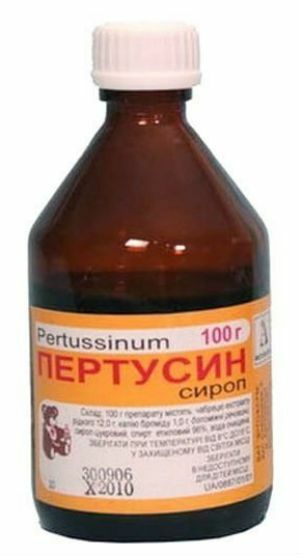
Inlet form - syrup;active ingredients - liquid extract of thyme, potassium bromide.
Has antitussive, mucolytic and expectorant action. Extract of thyme increases the secretory activity of the bronchial glands and reduces the viscosity of phlegm, due to which it liquefies and becomes easier to cough. Potassium bromide reduces the excitability of the central nervous system, resulting in a suppressed cough reflex and a reduced cough.
Adults and children after 12 years of age, the syrup is prescribed 10-15 milliliters;6-12 years old - 5-10 milliliters each;2-6 years - 5 milliliters each;up to 2 years - 2.5 milliliters each. Multiplicity of admission is 3 times a day.
Side effects: heartburn, nausea;rashes, hives, itching, angioedema.
Tavipek
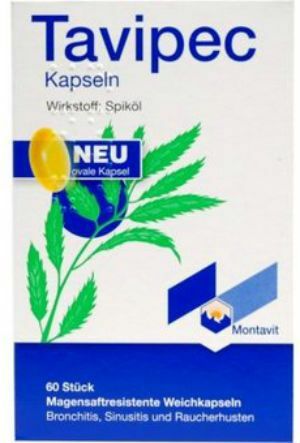
Form release - capsules;The active ingredient is spiked( Spanish) lavender oil.
The medicine has an expectorant, secretolitic, anti-inflammatory, epithelizing, immunostimulating and antimicrobic effect. Tavipek is used to treat chronic and acute bronchitis, sinusitis, bronchiolitis, pulmonary tuberculosis.
Tablets should be swallowed without chewing 30 minutes before meals. Adults and children after 12 years are prescribed 1-2 capsules three times a day.
Side effects: short-term nausea, belching.
Fluidite( Bronhobos, Libexin Muko, Fluviert)
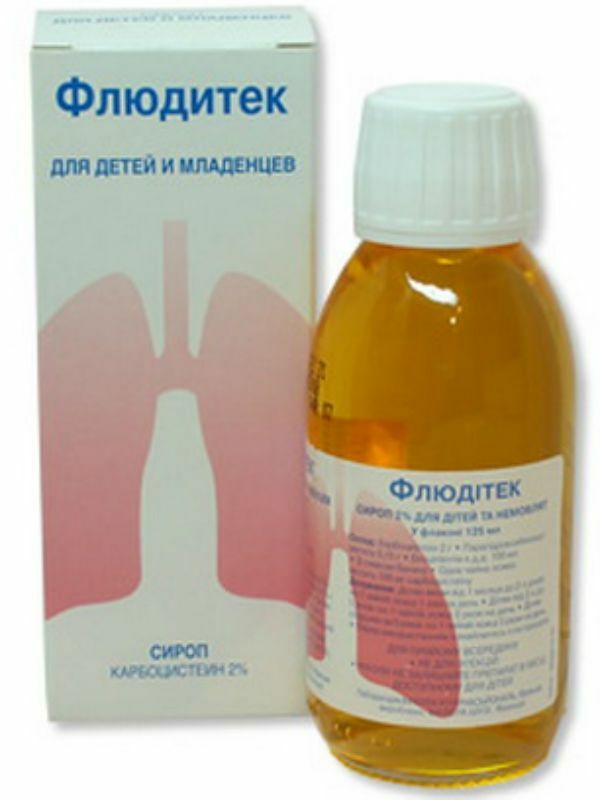
Inlet form - syrup 5% and 2%;the active substance is carbocysteine.
Mucolytic agent dilutes sputum and facilitates cough. The drug also has a pronounced anti-inflammatory and immunostimulating effect. Carbocysteine acts in all parts of the respiratory system and, due to this, it is used not only for coughing, but also for acute and chronic diseases of the nose and accessory pauses, the middle ear, accompanied by difficultly separated sputum, the formation of a viscous, dry secret.
Adults and adolescents after 15 years are prescribed 5% syrup of 15 milliliters( 1 tablespoon) three times a day. Children under 15 years of age use Fljuditik in the form of 2% syrup: from 1 month to 2 years - 5 milliliters( 1 teaspoon) 1-2 times a day from 2 to 5 years - 5 milliliters twice a day;from 5 to 15 - 5 milliliters three times a day. The medicine should be taken before meals or 2 hours after. The average course of therapy is 8-10 days.
Side effects: rarely - headaches, weakness, diarrhea, nausea, increased gas formation, itching, rashes, urticaria.
